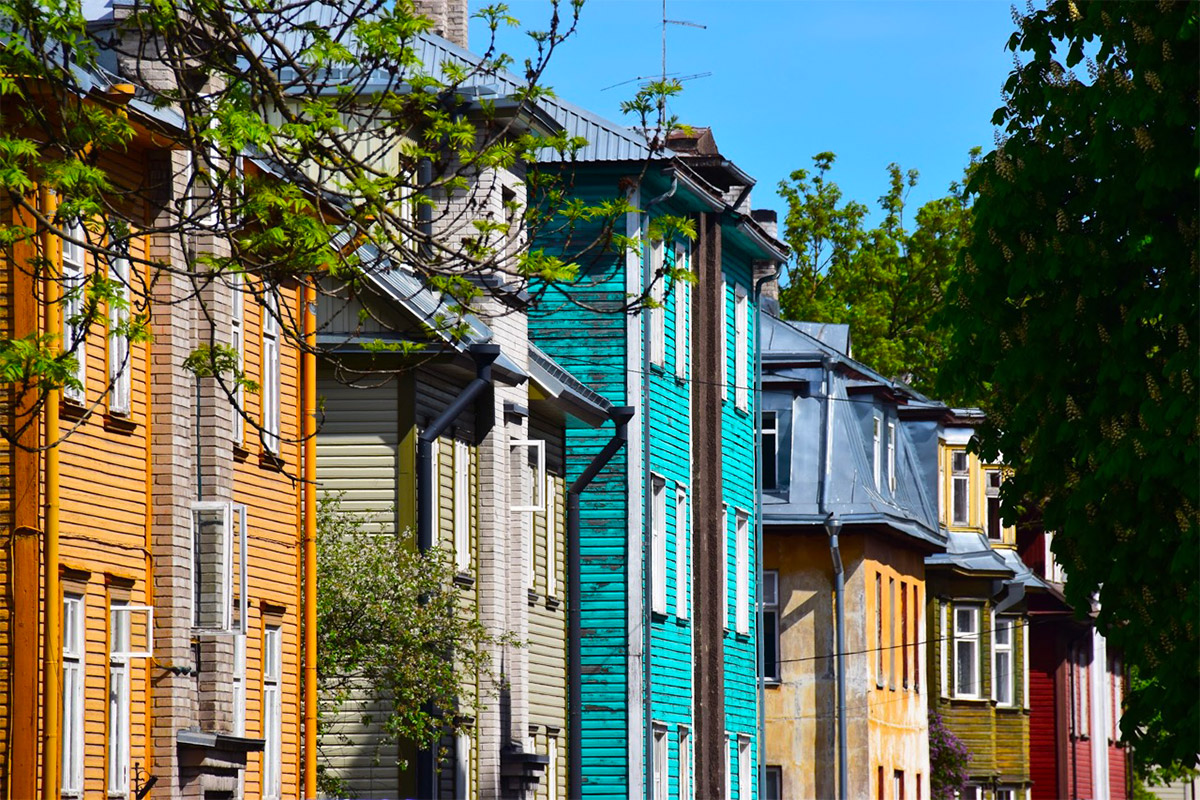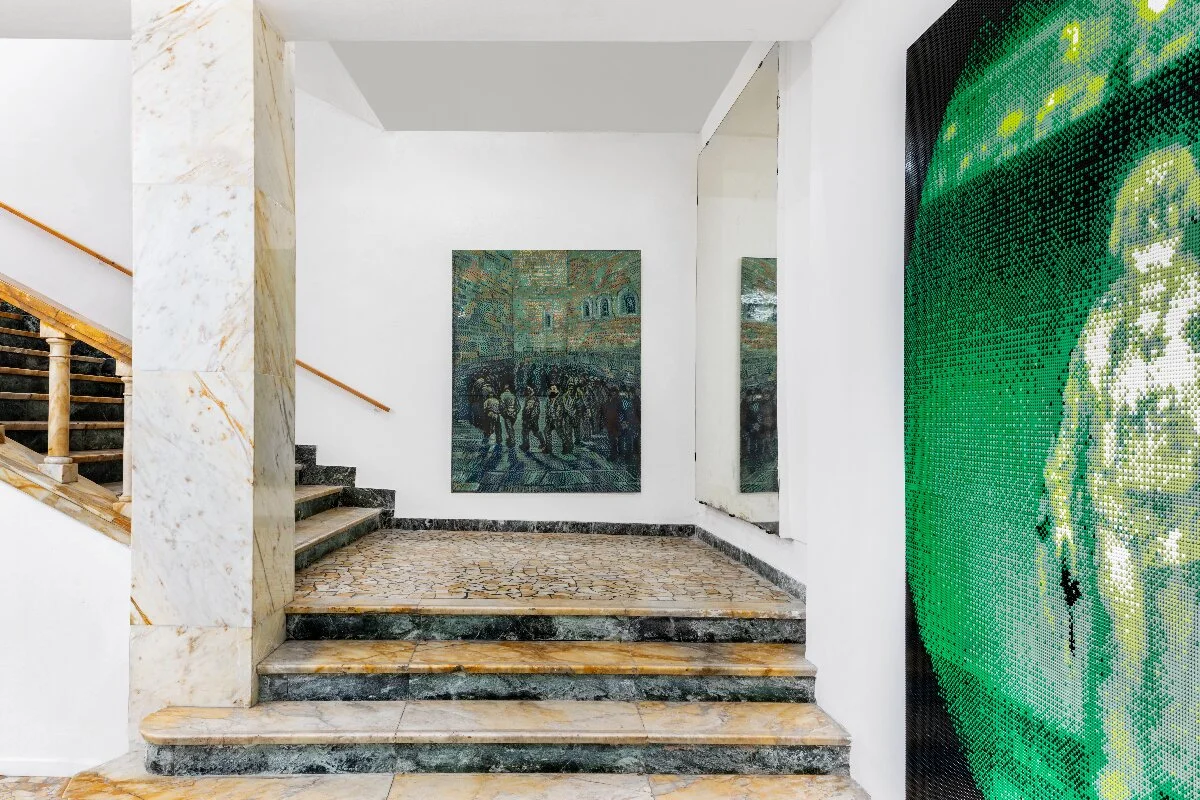Since January 1, 2013, after a city-wide free public transit referendum, Tallinn has provided its citizens with free public transport, becoming the first European capital to do so
Tallinn, the first city with free public transport
On September 9, 2021, the Finnish city of Lahti hosted the European Green Capital and Green Leaf Awards. During the event, they award the title of European Green Capital for 2023 to Tallinn.
Since 2013, Tallinn has provided its citizens with free public transport, becoming the first European capital to do so. In 2020, the Estonian city adopted the ‘Tallinn 2035 development strategy’. This focuses on six strategic goals which target a friendly urban space, creative global city, healthy mobility, green transformation, a kind community, and a home that includes the street.
Tallinn joined the Green City Accord (GCA). It is a movement of European mayors committed to making cities healthier and cleaner. They want to do so through further actions in five environmental management areas: nature and biodiversity, circular economy and waste, air, water, and noise.
«I cannot say that we have been working on sustainability for a long time compared to, for example, Nordic cities. Our history is different compared to theirs. But when it comes to commitment of sustainability, we have a new strategy called Tallinn 2035. It is the main umbrella strategic document for the city that we started developing in 2018», explained Krista Kampus. She is the head of EU and International Cooperation at Tallinn Strategy Centre.
Tallinn – the capital city of Estonia
Tallinn is Estonia’s most populous and chief port town. The city is located on the Baltic shore in the Gulf of Finland, on a bay in Northern Estonia. The Estonian capital has a population of 437,811 inhabitants living in an area of 159.2 km2. Its oldest area, the medieval ‘Old Town of Tallinn’ (Tallinna vanalinn), has been part of the UNESCO World Heritage List since 1997.
Tallinn appears in the Chronicle of Latvian Henrik. It narrates the arrival of the Danish fleet led by King Valdemar II near Lindanise castle in June 1219. On May 15, 1248, the King of Denmark, Erik IV Adraraha, gave Tallinn the Lübeck Rights. This bounded the Estonian city to the aforementioned municipal law, which was common in medieval, early modern Germany and in the Baltic. At the end of the 13th century, Tallinn joined the Hanseatic League. It was a medieval confederation and network of trading towns and merchants’ guilds located in central and northern Europe.
The city of Tallinn became a dominion of the Swedish Crown in 1561, in the context of the Livonian War (1558–1583). During the Great Northern War, shortages and the plague hit the city. This capitulated to Imperial Russia in 1710, keeping most of its earlier privileges.
On February 24, 1918, Estonia proclaimed independence. Nazi Germany occupied Estonia from 1941 to 1944. On September 23, 1944, the Soviet army seized the city. In 1991, Estonia once again becamean independent nation, and the city of Tallinn became the capital of this newly independent Republic.
Tallinn won the European Commission’s European Green Capital 2023 Award. How did they achieve this?
Since 2010, the title of European Green Capital has been awarded each year to a European city. It is a reward for their efforts to achieve environmental, social, and economic sustainability.
The finalist cities are assessed by a Jury, which selects the winner of the European Green Capital Award (EGCA). In October 2020, Tallinn presented its application. They described their activities with statistics regarding indicators such as air quality, nature and biodiversity, noise, sustainable land use, waste, and water.
In its assessment of Tallinn’s communications strategy substantiated by action plans, the Jury found Tallinn to be showing a systemic approach in its transition towards sustainability. In particular, with a strong focus on innovation and a spirit of service culture for other cities at different stages of their sustainable transition.
The Jury appreciated the city’s goal of enabling Tallinn’s citizens to reach all the necessary infrastructure with soft transport modes. They highlighted Tallin’s ability to enact a fast response in cases of urgency.
«We have a wealthy biodiversity and several nature protected areas. The Jury noticed our thoughts and our plans for the future, and the political commitment to diversify the mobility of the city of Tallinn. The third reason is what we are doing right now regarding sustainability governance issues. We have re-organized the whole city structure and organization to better coordinate sustainability work. This, to work better with the UN Sustainable Development Goals».
Is the city of Tallinn working on climate adaptation? Which climate adaptation policies are now in place in the city?
Tallinn has made steps towards climate adaptation. They are carrying out measures such as stormwater management systems and the remodeling of streets.
As reported by the European Climate Adaptation Platform Climate-ADAPT, the local government of Tallinn City and Viimsi Municipality are participating in the project. They call it the “Development of Sustainable and Climate Resilient Urban Storm Water Management Systems for Nordic Municipalities” (Urbanstorm, LIFE17 CCA/EE/000122).
What has the city of Tallinn done to promote the use of sustainable transport?
The city of Tallinn organized a referendum regarding free public transport. In it, more than seventy-five percent of its citizens voted in favor of it.
«We have free public transportation in Tallinn. People don’t have to pay anything: there are no tickets and no payments. It’s free for those living in the city of Tallinn who are registered as inhabitants of the city. All of them have free public transportation. We are now working in collaborating with neighboring municipalities to broaden this up to those municipalities», Kampus said.
«Right now, we are finalizing the new Tallinn sustainable urban mobility plan until 2035. At the moment, there are open and ongoing public consultations. We have a dialogue with citizens regarding this plan, and we are asking for their opinions and input on it».
A green city – Tallinn’s forests, parks, and community gardens
Fifty-one-point-four percent of mainland Estonia is vastly covered by semi-natural forests. During the last seventy years, the forest land area has risen by around one-point-five times. Pine, birch, and spruce are the most common tree species in the country. This is according to the Republic of Estonia Ministry of the Environment.
In Estonia, forests have cultural significance as they are a part of Estonian culture. The Kassinurme ancient area was established one point-five thousand years ago. Its sacred grove is one of the oldest holy places in Estonia.
In Tallinn, seventy-nine percent of residents have access to public green areas within 250 meters. Several vast ecologically functioning green urban zones are present in Tallinn. They act as migration corridors for various species. The city has many protected natural sites and objects amounting to 2200 hectares. This covers thirteen-point-eight percent of its territory.
Dozens of parks with green areas are located in the city of Tallinn, such as Kadrioru Park. This covers an area of eighty-five hectares. The Kase Park in Kopli underwent refurbishment in 2021, and the renovation of Männi Park was completed in 2021.
«The city of Tallinn owns around twenty percent of its territory. All the rest is privately owned. So there aren’t many places we can provide to the citizens. But if community groups are interested in setting up community gardens, we provide the financing to set up their community garden. We also offer training and cultural events, financing those as well. Our community gardens are places for integration, as they are places where people of different nationalities and different age groups meet. They contribute to climate adaptation, and they improve people’s health, especially when it comes to older people because they have been very keen when it comes to using community gardens».
What are the goals of the Tallinn 2035 development strategy?
Between the end of 2020 and June 2021, the Tallinn City Council adopted the “Tallinn 2035 strategy” and the climate plan “Climate-Neutral Tallinn 2030”.
With the cooperation of 5,000 of Tallinn’s citizens, the city created the Tallinn 2035 development strategy in late 2021.By 2035, they hope the majority of journeys undertaken by seventy percent of residents will be green. Additionally, there will be an increase in the share of people living in the catchment areas of centers. Ninety percent of Tallinn’s residents will have a public transport stop within a 400-meter radius of their houses.
The Climate-neutral Tallinn 2030 plan includes goals targeting climate change mitigation and adaptation. Tallinn plans to reduce greenhouse gas emissions by forty percent by 2030 compared to the base year 2007. They would also like to achieve climate neutrality by the middle of the century. Additionally, to strategize actions to better adapt to climate-change-related changes and risks.
«Last year, we created Tallinn’s Strategy Center, or strategic management office, which now combines all the city departments and structures dealing with strategic development issues, like service design, financial management, spatial planning, and the Smart City Competence Center. Our goal is to focus more on a holistic approach when it comes to the strategic planning and the implementation of the city’s development», added Krista Kampus.
Krista Kampus
the Head of EU and International Cooperation at Tallinn Strategy Centre and the Executive Director of the Tallinn Green Capital 2023. Tallinn university graduate, Krista Kampus has twenty-five years of professional experience in the fields of international cooperation and policy development.



















